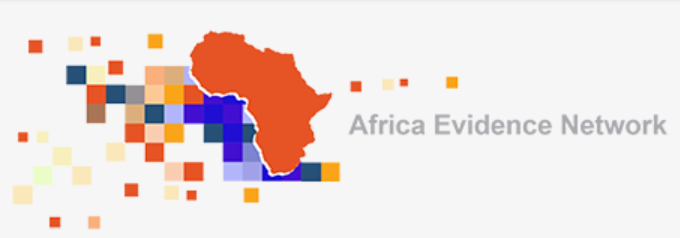
Evidence 2016 landscape maps and posters graphic recording
The Africa Evidence Network (AEN) is proud to launch a series of 25 maps on the evidence-informed decision-making (EIDM) landscape(s) in Africa. Maps were produced as part of the bursary conditions for attendance at Evidence 2016. These bursaries were provided as part of the University of Johannesburg’s Programme to Build Capacity for the Use of Research Evidence (UJ-BCURE), funded by the UK’s Department for International Development (DFID).
EIDM landscape mapping involves a graphic representation and description of the key stakeholders in the evidence and policy landscape in a particular environment, such as a country or sector. It maps the key role players in the production of research (e.g. universities, research councils and think tanks); role players in the use of research (e.g. government; NGOs; professional bodies); and intermediaries (e.g. knowledge brokers; donor organisations; networks). In addition, landscape maps attempt to represent the relationship and evidence flow between these actors by using arrows and other descriptive graphics.
As the evidence and policy landscape and relationships therein are hardly every linear and tidy, landscape maps can look messy but serve a number of important purposes. Maps serve as a reference point and catalyst for engagement between stakeholders on the nature of the EIDM landscape and therefore ‘get people round the table’. Maps are also useful for identifying strengths or bottlenecks in evidence flow and therefore areas of replication or improvement. For funders of EIDM capacity-support initiatives landscape maps could provide an indication of areas at which to direct future funding to strengthen the uptake of evidence in decision-making.
This landscape map series is the first of its kind and follows on EIDM maps produced by the UJ-BCURE programme on South Africa and Malawi. The series is unique in its diversity and comprehensiveness and consists of maps from ten different countries as well as two maps that span more than one country. The majority of maps are on Malawi (5) and Uganda (5), but maps from other countries include: Zimbabwe (3), Ethiopia (2), South Africa (2), Kenya (2), Zambia (1), Tanzania (1), Cameroon (1), and Tunisia (1). The two maps spanning more than a single country map the work of the Africa Gender Development Evaluators Network (AGDEN) and the African Capacity Building Foundation. The maps furthermore cover a wide range of sectors such as health and the environment; as well as evidence use by particular groups (such as Parliamentarians in Uganda, Malawi and Tunisia).
Map authors were given the opportunity to present their maps at Evidence 2016 during short oral poster presentation slots (or poster pods) – an innovative way in which conference participants could get a snapshot of the nature of the different decision-making landscapes.
Dr. Teferi Hailemicheal Hassen from Ethiopia presenting at the Evidence 2016 poster pods
All of the maps submitted by authors are available here, while their full conference presentations can be found here.
EIDM landscapes are fluid as new actors emerge and the flow of evidence changes. These maps are therefore also iterative and represent a snapshot in time. We encourage others to engage in similar mapping exercises and have included guidance on what to include in an EIDM landscape map here.
We would like to thank the authors of these maps for their contributions towards a series that leaves us with a much better understanding of the EIDM landscape(s) – both similarities and differences – across the African continent.